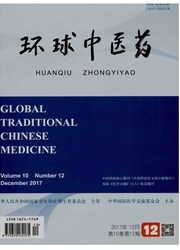

 中文摘要:
中文摘要:
医学成像技术很好地满足了腧穴研究中普遍存在的客观化、可视化需要,极大地推动与深化了腧穴有关研究。文章从活体光学成像、x线计算机断层成像、超声成像、放射性核素成像、核磁共振成像、红外热成像六个方面入手,结合腧穴研究中的关键科学问题,对医学成像技术在腧穴研究中的应用情况进行了概述。文献回顾表明,医学成像技术在阐释腧穴作用及其相关配伍的中枢与外周机制、论证腧穴特异性及其机制、探讨腧穴主治的中枢与外周基础、深化腧穴解剖结构及安全性研究、促进腧穴定位研究等方面具有重要意义。针对有关研究存在的成像技术缺乏合理与深度运用、对腧穴的动态性与整体性有所忽略、细胞与分子水平成像相对缺乏的三方面不足,未来研究应进一步促进成像技术升级与合理运用,完善基于腧穴特性的科研设计及其标准化,借助分子影像学技术将腧穴基础研究推进至细胞分子水平。
 英文摘要:
英文摘要:
Medical imaging techniques fully satisfy the objective and visual requirements in the research of aeupoint, and thus produce a vital thrust to research of acupoint. Combined with key scientific problems in research of acupoint, this paper describes application situation of medical imaging techniques from 6 aspects, optical imaging in vivo, X-ray computed tomography, uhrasonic imaging, radionuclide imaging, nuclear magnetic resonance imaging and infrared thermal imaging. The review of the literature showed that medical imaging techniques have deep meaning in explanation of central and peripheral mechanisms of acupoint' s function and combinations, argument for specificity of acupoint, debating on in- dications of acupoint and its central and peripheral mechanisms, deepening anatomical structure and safety of acupoint, promoting location of acupoint. The current researches have many defects on application of imaging techniques and neglect characteristics of acupoint. In addition, debates on cell and molecular level are relatively inadequate. Confronted with such problems, future research should promote the upgrading and rational use of imaging technology, improve the scientific design and standards based on the characteristics of acupoints, with the help of molecular imaging technology to promote acupoints into cell molecular level.
 同期刊论文项目
同期刊论文项目
 同项目期刊论文
同项目期刊论文
 期刊信息
期刊信息
